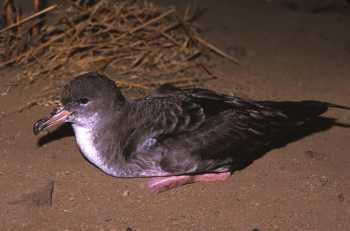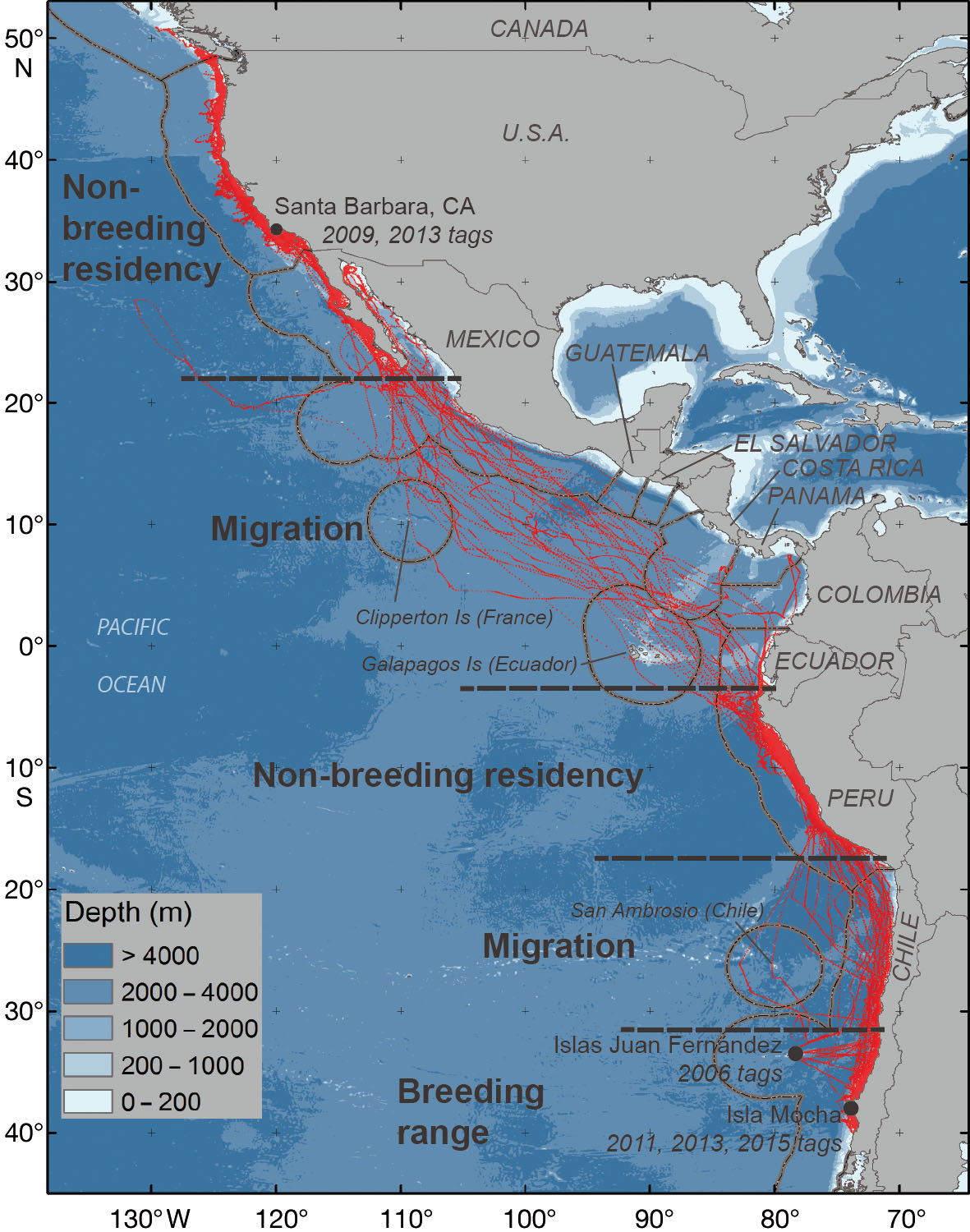Jonathan Felis (U.S. Geological Survey, Western Ecological Research Center, Santa Cruz, California, USA) and colleagues have published open access in the journal Endangered Species Research on tracking ACAP-listed Pink-footed Shearwater Ardenna creatopus at sea from Chile to Canada.

Pink-footed Shearwater, photograph by Peter Hodum
The paper’s abstract follows:
“The pink-footed shearwater Ardenna creatopus has a breeding range restricted to 3 central-Chilean islands and travels north in the eastern Pacific Ocean during the non-breeding period. Despite its Vulnerable IUCN status, the locations and relative importance of core non-breeding areas and migratory pathways of the species are not well understood. During 5 years between 2006 and 2015, we tracked the movements of 42 after-hatch-year pink-footed shearwaters in the non-breeding season using satellite tags. Tracked shearwaters exhibited 2 post-breeding-season migration strategies: 28% of individuals traveled 1600-2500 km north from their colonies to spend the entire non-breeding season off Peru, and 72% traveled 8000-11000 km north to waters off western North America (Baja California, Mexico, to southernmost Canada). Individuals that traveled to North America stopped in Peruvian waters on each leg of the migration, making this a migratory bottleneck. Core non-breeding-season areas included continental shelf and slope waters off Trujillo to Lima (Peru), central Baja California (Mexico), southern to central California (USA), and central Oregon (USA) to southern Vancouver Island (Canada). Of 12 national exclusive economic zones (EEZs) encountered north of their breeding range, birds primarily utilized the USA, Peru and Mexico, and to a lesser degree Chile, Canada, and Ecuador. Bycatch in fisheries was recently identified as a significant at-sea threat to pink-footed shearwaters, and we found evidence of pink-footed shearwater bycatch in 6 EEZs encountered by tracked birds, although quantification of bycatch magnitude is variable and not all fisheries have been studied.”

Breeding- and non-breeding-season residency areas, and migratory corridors of Pink-footed Shearwaters tracked from Chile and California; from the publication
Reference:
Felis, J.J., Adams, J., Hodum, P.J., Carle, R.D. & Colodro, V. 2019. Eastern Pacific migration strategies of pink-footed shearwaters Ardenna creatopus: implications for fisheries interactions and international conservation. Endangered Species Research 39: 269-282.
John Cooper, ACAP information Officer, 10 September 2019

 English
English  Français
Français  Español
Español